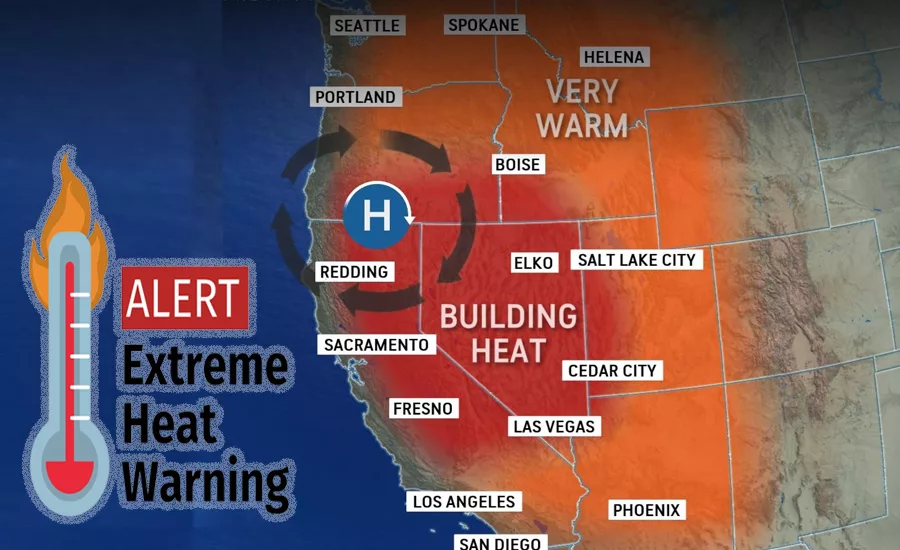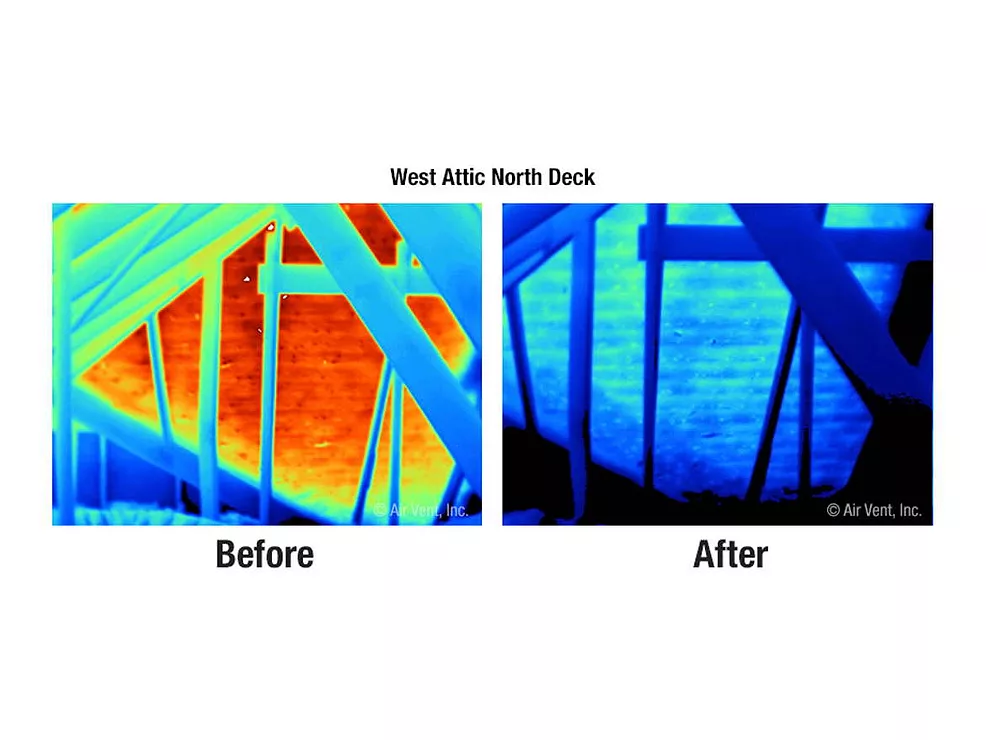Heat Advisory
Major Heatwave Hits the West, Wildfire Risk Rises
Construction workers and field crews at risk for hyperthermia

Roofing and construction crews should brace for extreme heat beginning May 29 as triple-digit temperatures sweep the Southwest, prompting urgent calls for hydration, shift planning, and heat illness prevention.
— Bryan Gottlieb/Roofing Contractor | Elements: AccuWeather, Adobe Stock
An intense early-season heat wave will engulf the Southwest beginning Wednesday, unleashing triple-digit highs that could imperil roofing and construction crews, as well as other outdoor workers.
With minimal humidity to temper the furnace-like heat, contractors are urged to finalize hydration plans, adjust schedules and remain vigilant to prevent heat exhaustion and potentially fatal heatstroke.
Forecast and Local Impact
AccuWeather warns that “the hottest weather of the season so far is on the way for many places across the interior West as the first heat wave of the season looms.”
Interior California, Nevada and western Utah will bear the brunt of the heat. In Phoenix, forecasters project highs of 103 degrees on Wednesday and Thursday before climbing to 105 degrees on Friday, with RealFeel temperatures nearing 109 degrees.
Las Vegas may reach 100 degrees as early as Wednesday and climb to 106 degrees by Friday and Saturday. Nighttime relief will be minimal across desert basins and high-plateau communities, allowing heat to accumulate and amplify health risks.
RELATED | 'Next-Level' Contractor Job Perk: Mobile IV Hydration
“This will be the first heat wave of the season in the West, outside of Southern California,” said Heather Zehr, senior meteorologist at AccuWeather. She noted that a general offshore flow — where wind travels from the land to the water — will enhance the heat.
That same pattern prevents any cooling by lower ocean water temperatures along the coast. “A strong high-pressure area to the north and a broad upper-level low over the Pacific west of northwestern Mexico are driving these conditions,” Zehr explained.
RELATED | Roofing’s Role in Adapting to Year-Round Wildfire Threats
Wildfire Threat Rises
Experts warn that record-low fuel moisture levels, combined with high winds and low relative humidity, will heighten wildfire danger. The National Weather Service cautioned that Arizona has experienced more than 30 additional fire-weather days annually over the past five decades. “The state’s excessively dry winter and predicted above-average summer temperatures further raise concerns about an extended and intense fire season,” the agency said.
Safety Measures and Planning
 Roofers and other exterior trades face particular vulnerability when the heat index exceeds 105 degrees for more than three hours over consecutive days, a condition that triggers extreme heat warnings.
Roofers and other exterior trades face particular vulnerability when the heat index exceeds 105 degrees for more than three hours over consecutive days, a condition that triggers extreme heat warnings.
Contractors should begin each shift by reviewing their heat-illness prevention plan and ensuring crews recognize warning signs such as heavy sweating, weakness, clammy skin, rapid, weak pulse, nausea or fainting.
Workers must drink water or electrolyte solutions every 15 to 20 minutes, even when they are not thirsty, and wear light-colored, loose-fitting, moisture-wicking clothing, along with wide-brimmed hats and UV-blocking eyewear.
Superintendents are advised to schedule high-exertion tasks early in the morning or late in the afternoon. When starting new or returning workers, begin at 20 percent of a normal shift in the heat and gradually build tolerance over several days. Shade canopies or umbrellas should be available when temperatures exceed 80 degrees, and mandatory rest breaks in shaded areas enforced once the thermometer climbs above 95 degrees.
At the first sign of dizziness, muscle cramps, confusion or a rapid heartbeat, workers must be moved to a cool area, given fluids and monitored closely; if symptoms worsen, employers should call emergency services immediately.
QUICK READ: Heat Wave Alert
- Temperatures are expected to exceed 105°F across parts of California, Nevada, Utah, and Arizona, with little nighttime relief.
- High Risk for Outdoor Workers: Roofers and construction crews face an elevated risk of heat exhaustion and heatstroke, particularly during prolonged exposure.
- Early Planning Is Critical: Contractors should review heat-illness prevention plans daily, adjust work schedules, and ensure access to shade and rest breaks.
- Hydration Is Non-Negotiable: Workers should drink water or electrolyte fluids every 15–20 minutes, avoiding sugary and caffeinated beverages.
- Watch for Warning Signs: Symptoms like dizziness, heavy sweating, and confusion must be treated immediately to prevent life-threatening conditions.
Resources
Contractors are encouraged to integrate guidance from OSHA’s Heat Illness Prevention Campaign, which mandates paid rest breaks and the provision of drinking water when the heat index exceeds 90 degrees.
Real-time HeatRisk Outlooks and local alerts are available from the National Weather Service. Updated forecasts and safety advisories can be found at accuweather.com.
Looking for a reprint of this article?
From high-res PDFs to custom plaques, order your copy today!







